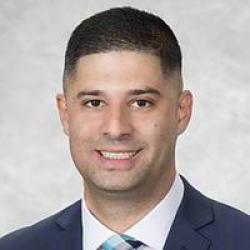
Primary care sports medicine
Are you an athlete or active person who is suffering from an injury? Do you have a chronic issue, or pain that will not go away? Do you want to optimize your athletic performance and prevent injury? If your answer is yes, primary care sports medicine may be right for you.
Just like how you visit your primary care provider to take care of your overall health, a primary care sports medicine specialist can help you address and manage non-operative musculoskeletal-related injuries or issues.
How we can help
Getting you back to living your best life is our goal, no matter your age. Our primary care sports medicine doctors specialize in treating a wide variety of injuries and conditions that you could experience from being active. From head, neck and shoulder issues to back, hip or knee pain (and many things in between), we’ve got you covered.
It’s not just athletes who can benefit
If you are active, engage in regular exercise, play school sports, are a weekend warrior or work a physically demanding job (such as a construction worker, delivery driver or landscaper), our team can help.
To determine your specific issue, we will:
- Complete an in-depth physical exam.
- Use leading-edge diagnostic tools to assess your condition (including on-site X-ray).
- Work with you to develop a treatment plan focused on the least invasive approach.
We are by your side every step of the way
We will coordinate with others on your care team if you require physical therapy or athletic training. We will oversee any conditions or medications you are taking that may impact your physical activities, even if they are not directly related to your issue. If surgery is part of your treatment plan, your specialist will refer you to an orthopedic sports medicine surgeon, who also specializes in the treatment of athletic injuries.
Meet the doctors
Our primary care sports medicine specialists are all fellowship trained in sports medicine. This means they’ve completed an additional year of training specifically in this area following their residency. We work with local high schools and professional teams and are active in our community.
Additional services
Additional services we offer that you may benefit from:
- Musculoskeletal ultrasound: Using a non-invasive, painless ultrasound technology, your doctor can see numerous tendons, muscles and soft-tissue injury concerns. If you need cortisone injections or platelet rich plasma injections, your doctor can use ultrasound to make sure the medication is placed in the precise place you need it.
- Platelet rich plasma (PRP) therapy: This is an injection of your own blood that has been spun down to increase the concentration of platelets. This concentrated blood has an increase in growth factors, proteins, cytokines and other bioactive molecules that initiate and regulate the basic aspects of healing. The goal is to change the inflammatory process of the joint or diseased tendon to promote proper and long-term healing.
- Sports physicals (also known as pre-participation physical exams): We offer low-cost AIA regulation sports physical events twice per year, once prior to the end of the school year for fall athletes and a second at the end of summer break for winter and spring athletes. Need to get an exam quickly? We also offer sports physicals for all levels of sport at each of our Sports Primary Care clinics and at select HonorHealth Urgent Care Clinics.
- HonorHealth Concussion Program: If you’ve been diagnosed with a concussion or are experiencing symptoms after a blow to the head, our program can help ensure you make a full recovery. Your concussion specialist will see you regularly to ensure you’re making progress and getting the resources you need.
Resources and articles
Preparing for your next hike?
Hiking season is among us, but with adventure comes risk. Erik Dean, DO shares seven tips for staying safe on your next hike.
Beat heat-related illnesses
Living in the Valley of the sun, we’re fortunate to have year-round sunshine that allows for more outdoor activities. However, heat-related illnesses can become a challenge.
Platelet-rich plasma therapy for orthopedic injuries
Platelet-rich plasma (PRP) therapy is widely being adopted as a suitable nonsurgical treatment option in the world of musculoskeletal conditions.

